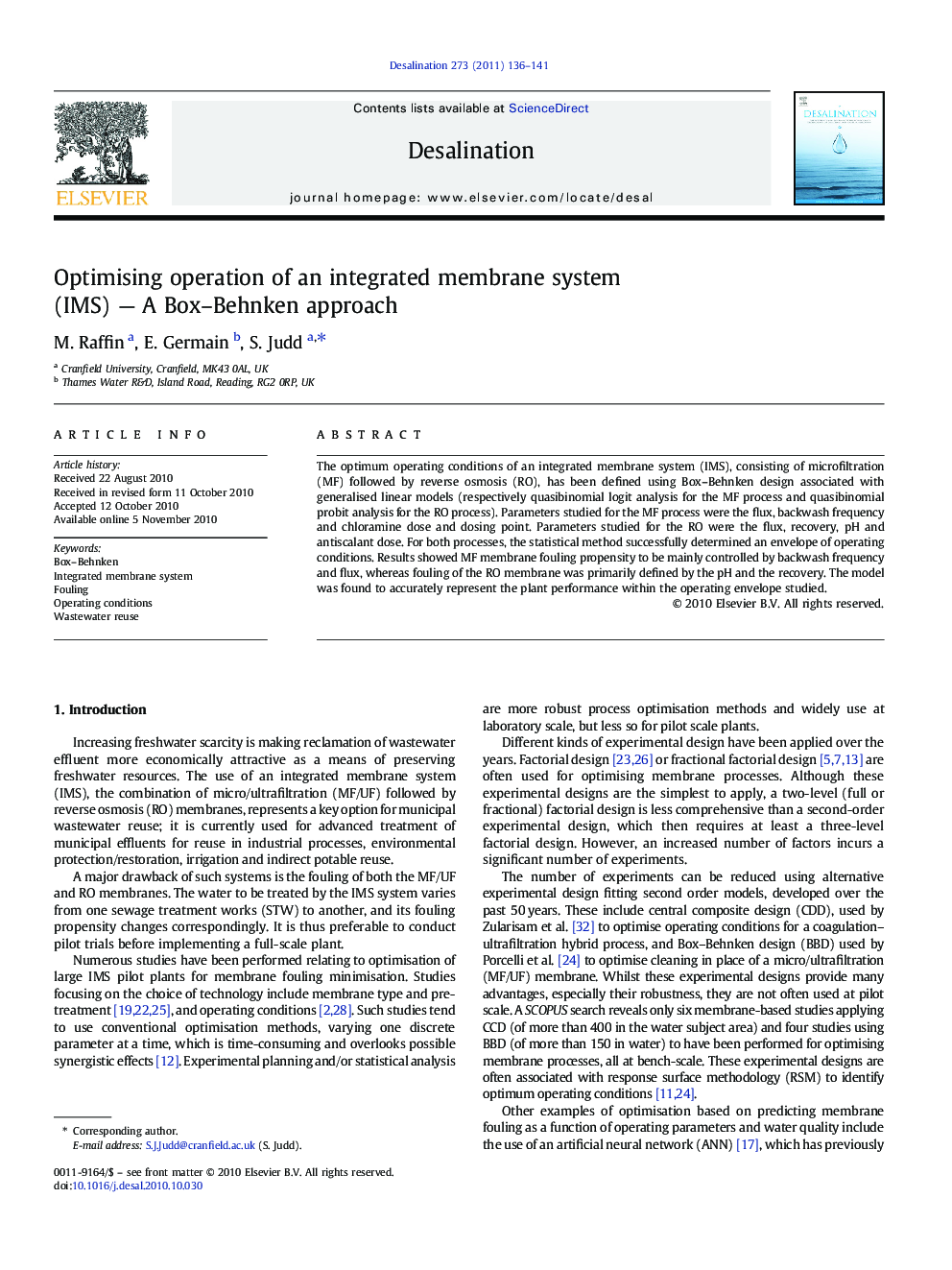| Article ID | Journal | Published Year | Pages | File Type |
|---|---|---|---|---|
| 625187 | Desalination | 2011 | 6 Pages |
The optimum operating conditions of an integrated membrane system (IMS), consisting of microfiltration (MF) followed by reverse osmosis (RO), has been defined using Box–Behnken design associated with generalised linear models (respectively quasibinomial logit analysis for the MF process and quasibinomial probit analysis for the RO process). Parameters studied for the MF process were the flux, backwash frequency and chloramine dose and dosing point. Parameters studied for the RO were the flux, recovery, pH and antiscalant dose. For both processes, the statistical method successfully determined an envelope of operating conditions. Results showed MF membrane fouling propensity to be mainly controlled by backwash frequency and flux, whereas fouling of the RO membrane was primarily defined by the pH and the recovery. The model was found to accurately represent the plant performance within the operating envelope studied.
Research Highlights►Demonstration-scale water reuse plant operation optimised through statistical methods. ►Box–Behnken determination (BBD) of the experimental programme limits the number of tests required for optimisation. ►Both microfiltration (MF) and reverse osmosis (RO) unit processes optimised with reference to three key operating parameters for each. ►Synergistic effects identified for the MF process (backwash frequency and flux), none were evident for the RO. ►The algorithms developed from BBD accurately predict plant performance within the defined operational envelope.
